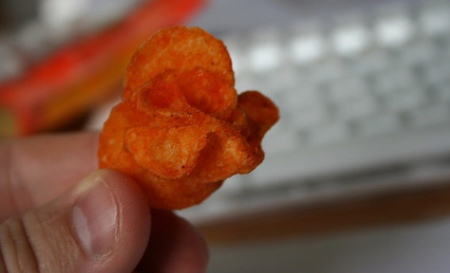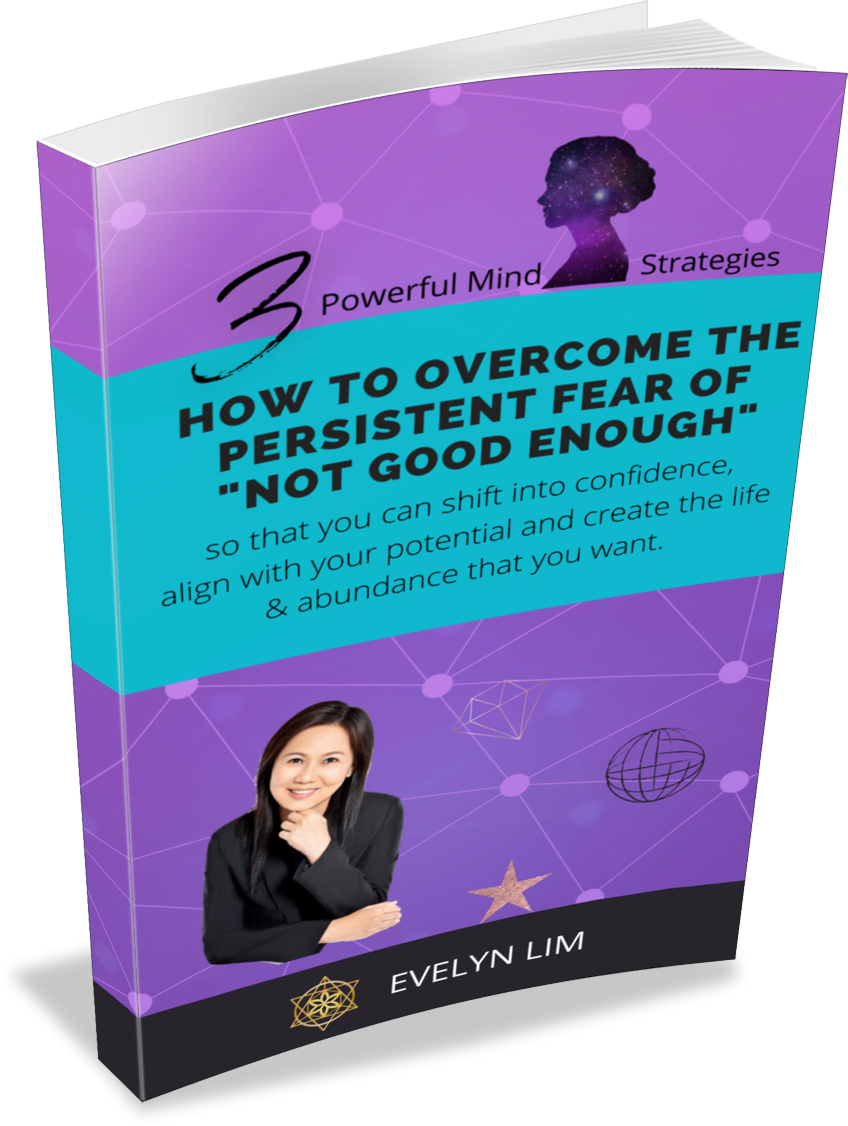Reduce Junk Food Cravings in Only 9 Minutes
- shares
- 15

(Photo Credit:Tofslie)
I was taught how to reduce my junk food cravings in 9 minutes in a Neuro-Linguistic Programming (NLP) workshop I attended over the weekend. I thought I’d share with you this today as you can use the very same steps to eliminate the impact of negative beliefs on your mind. The method, known as “Submodalities Intervention Process”, sounds fancy, but don’t let the term scare you off! It is really quite easy and can be completed in 9 minutes or less.
The Submodalities Intervention Process is excellent if you want to eat less of an unhealthy food. It also works if you have a smoking habit but yet do not feel 100% committed in cutting your habit completely. It can help you reduce the number of cigarette sticks that you smoke drastically. As mentioned, you can use it to make changes to your belief system. Best of all: This method is Fast and Fun!!
I had volunteered myself for this exercise in front of the class on Saturday. My aim: Cut my potato chips caving! For many nights in a row recently, I found myself unable to control my cravings for Kettle chips – succulent and crunchy – while working late into the night on the PC. The Submodalities Intervention Process that I went through had me salivating initially as I visualised the potato chips, to eventually not even desiring it!
Some understanding on the foundations of NLP will be useful to implement this method. I started out somewhat confused by the new terminology used but once these are laid out, I got a breakthrough in learning.
NLP In Simple Terms
We have essentially 5 representational systems – visual, auditory, kinesthetic, olfactory and gustatory. Our representational systems are relied upon to create the internal map we have about the world. We use this internal map to make our decisions and beliefs; although this very map may be flawed because it may not be an accurate representation of reality.
For each of these sensory modalities, there are finer details known as submodalities. For instance, in terms of visual, you can describe what you see in terms of color, brightness, size and depth. For feelings, there is duration, intensity, location in your body and more. For auditory, as you recall an experience, you can describe it in terms of pitch, direction or pace, etc.
Submodalities are the details by which you code and make up the structure of your internal experience. Submodalites can change the meaning of your internal experience and hence, your emotional state. You can alter the mental image you have, the audio that you hear or the feelings that you get to change your internal representations. When you change your internal representations, you can dictate your behavior or have an influence over your habits. As always, the best route to understanding anything is experential i.e. experiencing it yourself. Hence, let’s go through the process at this point before I give more supporting explanations and illustrations.
How To Reduce Your Food Cravings Quickly; No Need To Diet Anymore!!
Before you start, you must have in mind, the unhealthy food that you would like to give up and a food that you absolutely dislike eating. Also, you may want to get someone (coach or friend) to facilitate this process; at least for the first time round.
1. Your facilitator first asks you to rate the intensity of how you feel towards the urge for the junk food. For this step, it will be easy to view it according to a scale. Your facilitator asks you: “how would you rate the intensity of having this junk or unhealthy food, with zero being no feelings whatsoever and ten being the most intense?”
2. He then gets permission from your subconscious mind to make this change today by simply asking you this.
3. Your facilitator will then ask you to visualize the unhealthy food in terms of a Submodalities Checklist (Right-click for download if you want a copy). He helps to fill up your description in column #1. Here is a partial table of what the checklist looks like:
| #1 | #2 | #3 | |
| Visual | |||
| Black & White or Color | |||
| Near or Far | |||
| Location | |||
| Size of Picture | |||
| Associated / Deassociated | |||
| Focused or Defocused | |||
| Focus (Changing / Steady) | |||
| Framed or Panoromic | |||
| Movie or Still | |||
| Movie – Fast/Normal/Slow | |||
| Amount of Contrast | |||
| 3D or Flat | |||
| Angle Viewed From |
4. Your facilitator then induces a “break state” by distracting you, to wipe your mind of its mental image of the potato chips (or whatever is the junk food). Examples of break state statements that he can make include “where did you go last night?”, “oh….that is a nice pair of sunglasses you have on” or “now…spell your name backwards”.
5. After noting that you are now indeed distracted by his new questions or statements, he then brings you back to this exercise. He asks you to think about something that you dislike eating.
6. While you visualize this food that you do not like eating, he uses the Submodalities Checklist to fill up column #2.
7. He then induces another break state.
8. Your facilitator then marks out all the differences between columns #1 and #2. For each difference there is, he puts a “*” (star) in column #3.
9. He then asks you to visualise the unhealthy food again and then using the differences marked out with a “*”, he maps the submodalities of #1 into #2. In essence, he is asking you to visualise the picture of the junk food, to assume the submodalities of #2. For a more detailed illustration, read about the exercise I did with reducing my cravings for potato chips below.
10. Finally, it is time to test your mental image. Your facilitator now asks you to rate your intensity for the unhealthy food using the same language as step #1.
11. He also asks you if in the future, how would you feel towards the unhealthy food. In all likelihood, you will feel somewhat repulsed to the junk food since in your mind, it has assumed the submodalities of the food that you do not like eating.
Reducing My Cravings For Potato Chips
So there right in front of me, was a vivid mental picture of a packet of Honey Dijon Kettle Chips – no trans fat, no MSG, and always hand cooked. The packet looked ready to be ripped apart and beckoning!
When I first brought up the image, the packet of potato chips was huge, bright with color, near (within reach), at eye level, focused and associated (as if I was not a seperate image but with the junk food in front of me), in terms of visual submodalities.
Interestingly, when I tried to visualize my other picture of something I dislike eating – that of a pungent smelling tropical fruit known as durian – it appeared dull, far (2 meters away), defocused and deassociated.
In mapping the submodalities for change, James (my NLP coach) asked me to strip my mental image of the packet of potato chips of its color. Let it appear black and white, he said. He then asked me to make this picture smaller by 10 times. He went down the list of “*” to cover all the submodalities that differ. Based on visual submodalities alone, my mental image of a packet of Kettle potato chips finally became colorless, further by 1 metre, blurrer by 5 times and de-associated, amongst others.
Since there was nothing auditory for me, in column #2, there were no contrasts to be made here. James then went on to kinesthetic contrasts. I was asked to imagine the spin of my urge in the opposite direction and to intensify the spins by 10 times, in bigger and stronger loops.
Creating Change With Submodalities
Reduce Intensity Of Fears
You cannot alter your environment. However, you can change how your experience is coded with using submodalities. You can alter your mental images by varying its intensity, desirability, credibility, etc to get the results that you want. Your internal representations of your environment can therefore be easily changed.
The desired outcome of many NLP patterns is to either reduce or increase the intensity of a memory. The patterns are particularly useful for applying to situations of irrational phobia, trauma or some other emotional experience. Through the process of mapping, what was an unpleasant memory becomes one that adopts the same submodalities of a pleasant memory. Hence, using the steps as detailed above, it is possible to re-code your thoughts with regards to your fears.
Eliminate Negative Self-Talk
You can also easily use this method, without the aid of a coach, to deal with the inner voice that goes on in your mind. Find yourself always in negative self talk? In all likelihood, this inner voice is telling you how useless, worthless and stupid you are.
If so, be aware when this voice comes on. Then, make this voice go more cheerful in tone, sillier with a Mickey Mouse tone to it or softer in its content. As Richard Bandler says in his book on submodalities – Using Your Brain For A Change – “All the things that go on in your mind affect you and they’re all potentially within your control.”
Empower Yourself With New Motivating Goals
It is also possible to change the meaning and impact of your internal coding for future outcomes and goals. Using the right modalities, you can become more motivated by making your goals appear more attractive. If you have a limiting belief that says “I can never be successful”, then you can easily change its mental influence, by associating your negative belief with submodalities of more empowering ones.
Spin Positive Energy
One of the kinestatic submodalities is on spinning. When you think about a pleasurable experience, this usually brings on a smile. You experience a surge of positive energy coming from within. At this point, imagine a wheel spinning this energy. Note the direction of the spin, be it clockwise or anti-clockwise, forwards or backwards.
The next time when you encounter a negative thought or emotion, start to imagine this wheel again, spinning in the same positive direction as what you have noted before. Make the spin go faster and faster, many times over! Yes….You will begin to feel energized!!
This spinning technique should come in handy in keeping your positive vibrations up. If you find yourself feeling down or upside, call up this “wheel”. As you practise using it more and more, you experience a continuous flow of positive energy. The Law of Attraction will surely work its magic!
- shares
- 15


